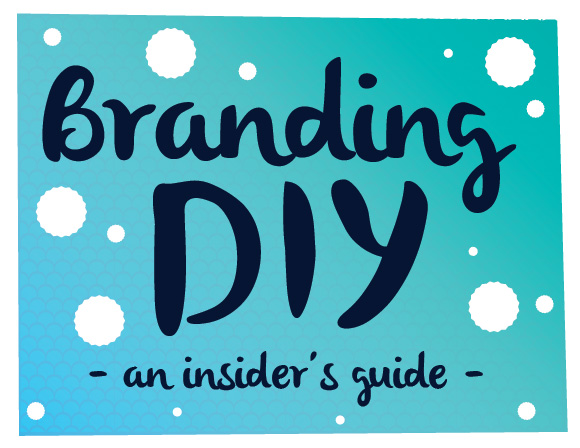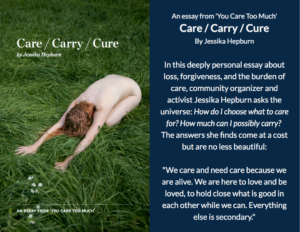
I’ve been a graphic designer for over 10 years and in that time I’ve worked with and created many brands. Along the way I’ve learned a few pretty important things that help get the best results from all branding projects. The best thing is that these rules apply as much to your own brand as they do to huge multinationals and with just a little bit of work at the beginning of a project you can make sure your brand really reflects all that is unique and brilliant about your business.
Don’t start with design.
If you go in first off with pencil or pixel you’ll probably come undone in the long run. It’s wise to start with some serious thinking about your business, what it is (and isn’t), what messages you want to communicate and who you are communicating to. I usually run through a simple set of questions when I start a branding project with new clients.
Describe what you do/your company does as if talking to a 10 year old
Describing the essence of your business in a clear, simple statement can be tough, but knowing this is a powerful thing. Think about how and why you do it as well as what you do. The shorter and more concise this can be the better and don’t use jargon or technical terms – keep it real!
Who is your target market?
Be as descriptive as possible, try and delve deeper than age and sex – Where else do they shop? What newspaper do they read? What are their values and priorities? What problem of theirs are you solving? These are the people who will be buying your product or service and so your brand needs to appeal directly to them. Having a clear understanding of who your audience are really helps focus your mind, it’s not all about what you like, keep your customer in mind at every stage of the branding process. Look at the design of other brands that are aimed at the same people and start a scrapbook or Pinterest board of these visual goodies
Who are your competitors?
Your industry competitors are probably aiming for the same group of people as you but, by looking at their branding, you’ll quickly see that there is more than one way to go about this. Can you spot your competitors who are positioning themselves as a premium product? How about ones that have a more value based message? How does their design differ? Note also the tone of voice and the specific language they use to describe themselves and their product or service. Add this to your visual scrapbook or moodboard.
How are you different from your competitors? What are your unique selling points (USPs)? Why would customers shop with you rather than your competitors?
This is a really key thing to know, what exactly makes you different from all of those competitors? Are you positioned differently, ie more up market? Are you more hands-on and human? Is your service level higher? How? Or do you have a specific selling point like using all recycled materials? This a really important message that your brand will need to get across.
What is the overall impression you want people to have of your business?
Is your company energetic and friendly or calm and authoritative. Try and find words that really describe the uniqueness of your business and avoid ‘catch-all’ adjectives like quality, professional and trustworthy (no one describes their business as not being these!) Think about your customer’s experience of you and your company, what would you like them to say about you to their friends? What words would you like to see in testimonials from happy customers? Think about your USPs when writing this.
Using your answers to all the questions above as a starting point chose five or six key words that best describe your business.
Try to find words that are rich in descriptive qualities and spark the imagination. The best words are ones that could only apply to your business. These words are your guides. Know them, love them, print them out and pin them on your wall.
For instance here are mine: Colourful, Curious, Authentic, Unexpected, Nerdy, Bold
Look in unusual places.
If you’ve been collecting designs from other brands aimed at your audience and those of your competitors it’s likely that you’ll they have some common design threads. So now it’s time to go and look in some more unusual places for inspiration outside this narrow band. Start with your keywords. What springs to mind when you think of them? Do they lend themselves to particular colours or fonts or maybe there is an obvious icon or motif that goes with one of the words? How do you draw witty, or curious, or futuristic, or intellectual (or whatever your words are).
Go and do your research, ask friends and family and be open to inspiration everywhere from TV adverts to walks in the woods. This is how you find your unique visual identity – it lives in your key words and the trick is converting them into a visual shorthand.
Not just designing a logo.
The logo is just part of your brand, a big part sure but it doesn’t end there. Everything you are involved with is an extension of your brand, from your URL, to your tone of voice and even the way you answer the phone. It’s important for every element of your business to be consistent and the best way to do this is to refer back to your keywords. Think about how they affect your telephone manner, the way you sign off you emails or the paper stock you choose for your letterheads? How would you do this in an unexpected way? An optimistic way? A community-minded way? (insert your own keywords here…)
You get to build a whole world around your brand and this is the most fun part of any project – the sky is the limit, run with your imagination and challenge the ‘normal’ way of doing things.
If you are not sure whether you can DIY your own brand (or anything else) here is some printable inspiration to remind you that “YES YOU CAN”, just click here or the image below to download your copy!





